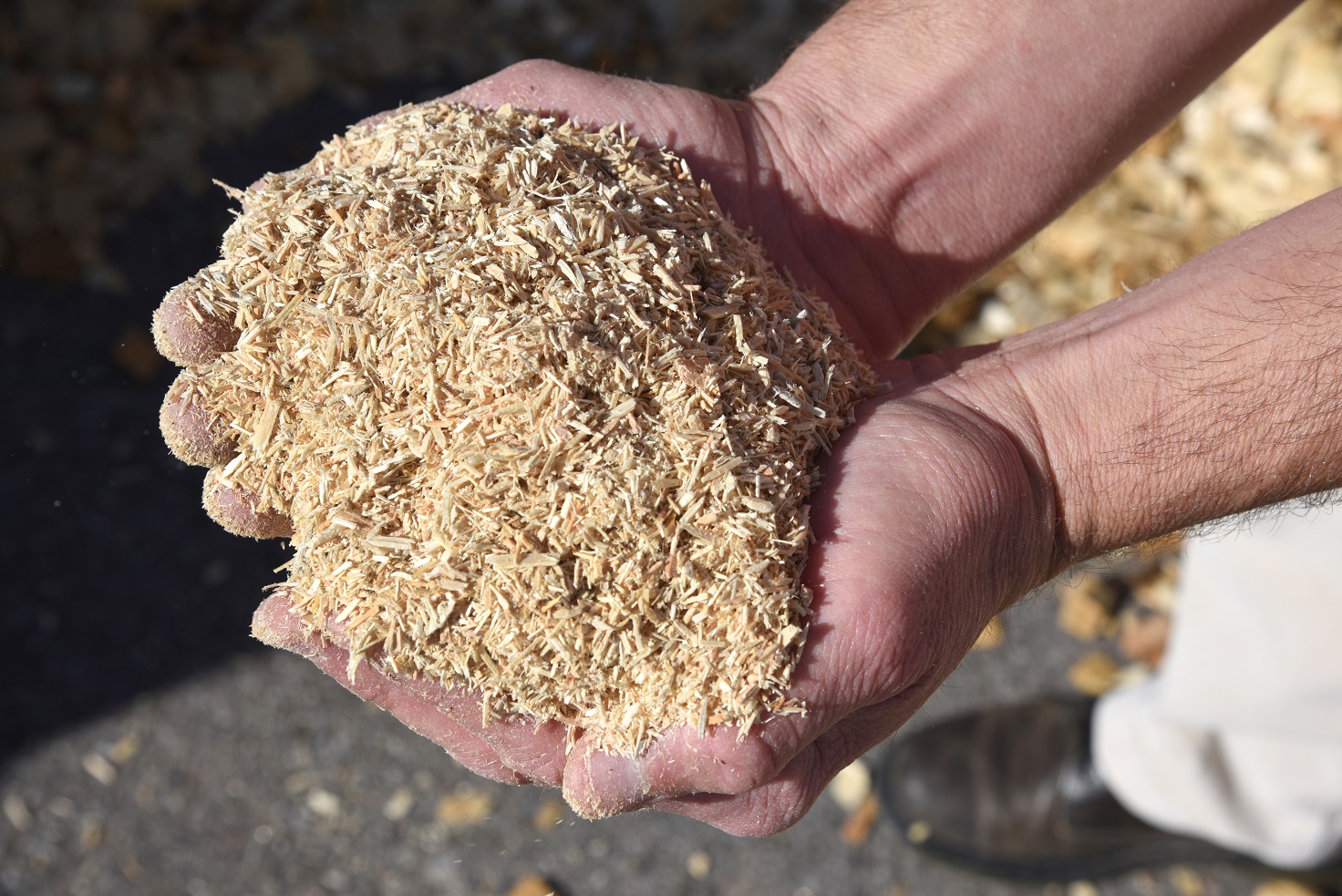Emerald ash borers, zebra mussels, English ivy, northern snakeheads, kudzu, European starlings, tiger mosquitos, water hyacinth … the list of invasive species that do significant harm—both ecologically and economically—is extensive. And while the fight against them can seem at times a losing battle, researchers at Idaho National Laboratory are finding ways to tip the scales. Transforming certain invasive plants into renewable biofuels puts the unwanted plants to good use and reduces the net energy costs of mitigation efforts.
But not all plants are good candidates for conversion into bioenergy. Differences in bulk density, chemical composition, moisture content, and particle size distribution after going through a chipping process all affect their suitability as biofuels. Corn stover, the material left over after a corn harvest, is a common bioenergy source. Having been rigorously studied, its energy potential is thoroughly catalogued and it serves as a yardstick against which other biofuels are measured.

“But we didn’t want to assume water hyacinth was like corn stover,” said INL Senior Research Engineer Jaya Shankar Tumuluru regarding his work with the fast-growing aquatic plant originally from the Amazon basin. Water hyacinth has choked waterways across the Southern U.S. and has even been found as far north as Michigan. “It lives in lakes and rivers and so has a high moisture content,” said Tumuluru. “A lot of energy has to go into drying it, so we explored whether it was suitable—whether it was an economically viable fuel.”
The effort to uncover such answers takes place at the U.S. Department of Energy’s Biomass Feedstock National User Facility. It’s here that researchers put the 27,000-square-foot Process Development Unit to work processing and testing a variety of feedstocks—the raw materials that supply an industrial process—for suitability as energy sources. Such items include grasses, wood chips, logging residue, and, like corn stover, the remains of crops after the edible parts have been harvested. The United States produces some billion tons of dry mass residue from crops annually, explained Quang Nguyen, the facility’s director. “The energy potential is really big if you convert even a fraction of that to fuels and chemicals.”
Tumuluru’s work with water hyacinth proved promising. Taxonomically, it might be a far cry from corn stover, but as a potential energy source, “It’s closer than you might think,” he said.
Even when a plant is native, shifts in its range may render it an unwelcome presence. A warming climate coupled with decades of vigorous fire suppression across the American West and Southwest have resulted in an extensive expansion of pinyon pine and juniper into what were historically sagebrush ecosystems. Not only does the increase in these trees further fuel the risk and severity of wildfires, but their presence has been shown to drive away threatened species such as sage grouse (the birds avoid tall trees that could hide a perching predator).

Amber Hoover, an INL research scientist, was part of a team that helped the Lincoln County Regional Development Authority analyze a Bureau of Land Management proposal to thin more than 700,000 acres of pinyon pine and juniper in Lincoln County, Nevada. The LCRDA was working to attract industries that might use the woody resources as a feedstock and needed an in-depth understanding of the trees’ attributes so that their biomass could be precisely mapped to appropriate end uses.
“We found it was good material,” said Hoover. “We looked at biomass properties to determine value for fuels and precursors for biochemicals. You can convert biomass to fuel through thermochemical or biochemical, using enzymes and microbes, conversion processes.”
Data such as that generated at the BFNUF for pinyon pine and juniper goes into the facility’s Bioenergy Feedstock Library, a repository of physical biomass feedstock samples and an associated database of performance characteristics. The library contains data on some 85,000 biomass samples, actual physical specimens of more than 50,000 and bioenergy characterization data for another 25,000.
In addition to the work done by INL itself, other research organizations contribute to the library, and the data is made available to the world. “Analyzing feedstock composition is very tedious and expensive,” said facility director Nguyen, “so making it available to the public is a big plus for a company without the time or money to know if they should pursue converting a particular feedstock [into useful fuels and biochemicals].”
Golden Leaf Energy is perhaps the most recent company to benefit from the BFNUF and its feedstock library. The New Orleans-based company turned to INL’s Technical Assistance Program, or TAP, for help analyzing a proposed bioconversion process. TAP provides up to 40 hours of free technical assistance to small technology-based businesses in the areas of energy and national security, and awards between six and 10 TAP projects each year.
Management at Golden Leaf Energy was heartened enough by INL’s preliminary results to undertake additional steps with the lab to create a pilot facility in California to further explore the production of fuels and building materials. “The fundamental theoretical analysis is done,” said Troy Clark, president of Golden Leaf Energy. “There are a lot of ways to break down biomass—chemical processes, mechanical processes, and combinations of those—and we’re about to test a few.”
The pilot facility phase is expected take about 12 weeks, and depending on the results obtained, “The next step would be a commercial facility,” said Clark. “That’s the ultimate goal.”
Clark said he knew early on that the expertise INL researchers could bring to bear was integral to the success of his company’s project. “I originally met Quang [Nguyen] at a conference—I’d sought him out after his talk because of his background in processing biomass. I then visited the site in Idaho,” he continued. “It was important to have a chance to see the lab and meet the key players. It’s worked out really well for me—without INL’s help, [the analysis] wouldn’t have been done as well and it would have been a lot more expensive.”





